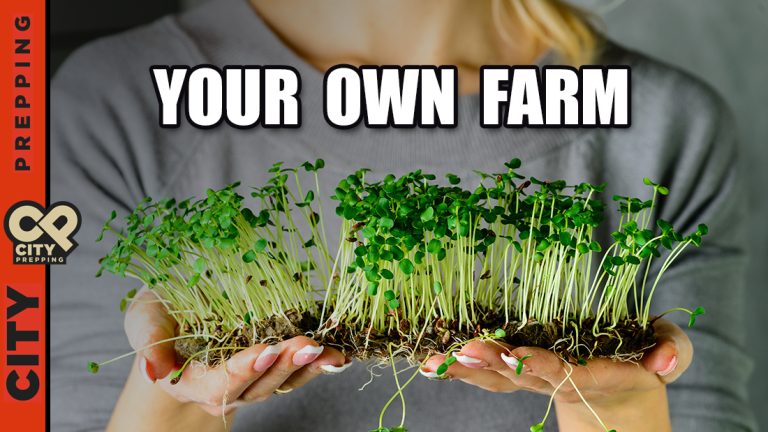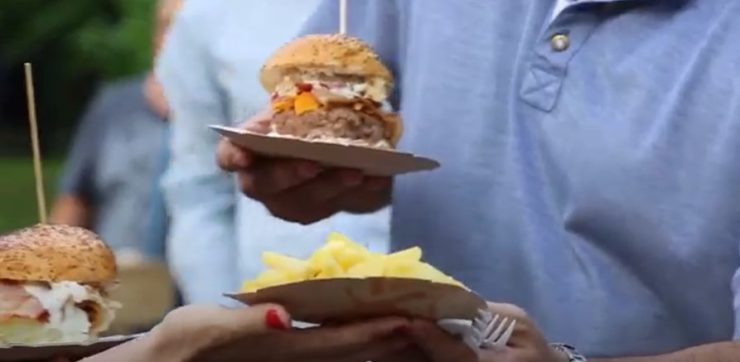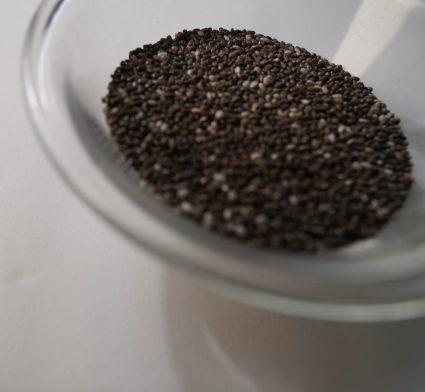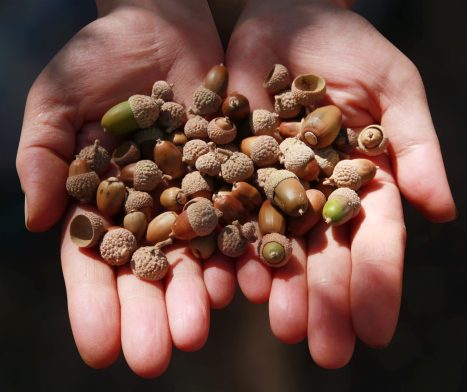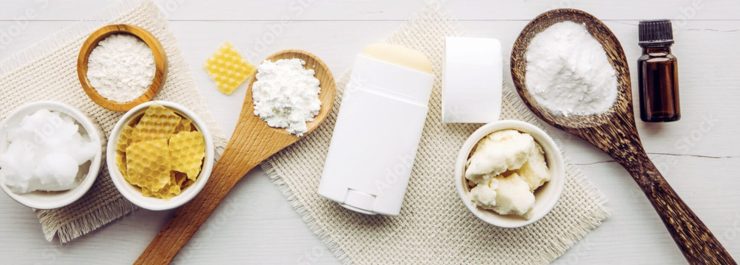 The difference between a sprout and a microgreen is in their stage of development and their growing medium. Sprouts emerge from seeds and require only water to grow. Microgreens require soil or some type of soil medium and are sprouts that have advanced to a leaf structure. It is the leaf structure and stem that is the consumed part. When you sprout any seed, there are numerous benefits. You unlock all of the potential nutrients and enzymes locked away in the seed, and you make these available for your digestive system to absorb them better. Sprouting is the germination of the seed and an expansion of its locked-away potential.
Sprouts are rich in many essential nutrients. While the specific ratio of nutrients will depend on the type of sprout, they generally contain high levels of folate, magnesium, phosphorus, protein, vitamin K, and an abundance of enzymes. In fact, they have higher amounts of these nutrients than fully-grown versions of the same plants. Sprouts have fewer carbohydrates than their seed, berry, or bean form, making them easier to digest. Eating sprouts is proven to help people lower and manage blood sugar. Some sprouts contain glucoraphanin, the precursor to the compound sulforaphane, which helps activate and strengthen our body’s natural cancer protection and helps decrease the chance of malignancy.
Sprouts are good for your gut. Sprouts contain compounds that assist the liver in detoxification and help to balance hormones. Studies have shown that the soaking process increases the number of enzymes available to the sprout and increases the sprout’s fiber. Studies have shown that eating some sprouts can boost immune cell function. If you are slightly gluten intolerant, you will be glad to know that sprouting grains reduce their glutens by nearly fifty percent. All of these positive benefits aren’t just theoretical. Study after study has proven them to be true.
Microgreens take nutrition even further step forward. Microgreens are considered baby plants, falling somewhere between a sprout and baby green. While you can have sprouts in two to seven days, you have to give microgreens soil a full seven to 21 days to develop. The most common growing mediums are peat, perlite, and vermiculite. Single-use growing mats produced specifically for growing microgreens are considered very sanitary. Microgreens are rich in polyphenols and antioxidants– up to forty percent higher than their fully matured plant version. Like sprouts, they’re a rich food source that can replenish itself with proper care and light.
EQUIPMENT & TYPES OF SPROUTS
The difference between a sprout and a microgreen is in their stage of development and their growing medium. Sprouts emerge from seeds and require only water to grow. Microgreens require soil or some type of soil medium and are sprouts that have advanced to a leaf structure. It is the leaf structure and stem that is the consumed part. When you sprout any seed, there are numerous benefits. You unlock all of the potential nutrients and enzymes locked away in the seed, and you make these available for your digestive system to absorb them better. Sprouting is the germination of the seed and an expansion of its locked-away potential.
Sprouts are rich in many essential nutrients. While the specific ratio of nutrients will depend on the type of sprout, they generally contain high levels of folate, magnesium, phosphorus, protein, vitamin K, and an abundance of enzymes. In fact, they have higher amounts of these nutrients than fully-grown versions of the same plants. Sprouts have fewer carbohydrates than their seed, berry, or bean form, making them easier to digest. Eating sprouts is proven to help people lower and manage blood sugar. Some sprouts contain glucoraphanin, the precursor to the compound sulforaphane, which helps activate and strengthen our body’s natural cancer protection and helps decrease the chance of malignancy.
Sprouts are good for your gut. Sprouts contain compounds that assist the liver in detoxification and help to balance hormones. Studies have shown that the soaking process increases the number of enzymes available to the sprout and increases the sprout’s fiber. Studies have shown that eating some sprouts can boost immune cell function. If you are slightly gluten intolerant, you will be glad to know that sprouting grains reduce their glutens by nearly fifty percent. All of these positive benefits aren’t just theoretical. Study after study has proven them to be true.
Microgreens take nutrition even further step forward. Microgreens are considered baby plants, falling somewhere between a sprout and baby green. While you can have sprouts in two to seven days, you have to give microgreens soil a full seven to 21 days to develop. The most common growing mediums are peat, perlite, and vermiculite. Single-use growing mats produced specifically for growing microgreens are considered very sanitary. Microgreens are rich in polyphenols and antioxidants– up to forty percent higher than their fully matured plant version. Like sprouts, they’re a rich food source that can replenish itself with proper care and light.
EQUIPMENT & TYPES OF SPROUTS
 We used both specific sprouting seed sources and random seeds we picked up from various grocery stores for our experiment here. We’re using two types of sprouters. One is basically a screen lid for large mason jars. We have a plastic version that allows me to tilt the jar at an angle and let the water run out, and we have some screen lids that screw onto the top. If you have a jar and any screen or gauze or another filter medium that will let the water drain and keep the seeds in, you will be able to sprout. We are also using some trays where we will add paper towels and soil to cultivate sprouts into microgreens.
We will tell you now that some of these sprouts were great, and some were utterly duds. Any seed, grain berry, or bean can be sprouted, but you will have mixed results and rates of germination. Some of the seeds you buy at the store are irradiated to prevent them from ever germinating. Mustard seeds, for instance, are often irradiated. When you obtain seeds for the purpose of sprouting, buy organic, Kosher, or seeds intended specifically for sprouting. You could also gather them yourself from the wild, but avoid areas where pesticides may have been sprayed. Avoid genetically modified seeds, as these are sometimes modified not to sprout successive generations of plants.
We are going to try a wide range of seeds here. We have Pinto beans, black beans, Adzuki beans, Amaranth, Green Lentils, Chia seeds, Oat Seeds, Black Sunflower seeds, a spicy sprout mix, Flaxseed, Quinoa, and brown rice. Not all of these were a success for me, and we will tell you which ones were and which ones we would sprout again. There are hundreds of sprouts you can use. You can even sprout nuts. After all, a nut is a seed. You should start sprouting now and find a sprout that works well for you and your body processes well.
THE PROCESS
We used both specific sprouting seed sources and random seeds we picked up from various grocery stores for our experiment here. We’re using two types of sprouters. One is basically a screen lid for large mason jars. We have a plastic version that allows me to tilt the jar at an angle and let the water run out, and we have some screen lids that screw onto the top. If you have a jar and any screen or gauze or another filter medium that will let the water drain and keep the seeds in, you will be able to sprout. We are also using some trays where we will add paper towels and soil to cultivate sprouts into microgreens.
We will tell you now that some of these sprouts were great, and some were utterly duds. Any seed, grain berry, or bean can be sprouted, but you will have mixed results and rates of germination. Some of the seeds you buy at the store are irradiated to prevent them from ever germinating. Mustard seeds, for instance, are often irradiated. When you obtain seeds for the purpose of sprouting, buy organic, Kosher, or seeds intended specifically for sprouting. You could also gather them yourself from the wild, but avoid areas where pesticides may have been sprayed. Avoid genetically modified seeds, as these are sometimes modified not to sprout successive generations of plants.
We are going to try a wide range of seeds here. We have Pinto beans, black beans, Adzuki beans, Amaranth, Green Lentils, Chia seeds, Oat Seeds, Black Sunflower seeds, a spicy sprout mix, Flaxseed, Quinoa, and brown rice. Not all of these were a success for me, and we will tell you which ones were and which ones we would sprout again. There are hundreds of sprouts you can use. You can even sprout nuts. After all, a nut is a seed. You should start sprouting now and find a sprout that works well for you and your body processes well.
THE PROCESS
 Whatever seed you choose, the process of sprouting is essentially the same. You start by rinsing the seeds and removing any other seeds, twigs, rocks, or other contaminants that may be in with them. Then, soak the seeds for eight to twelve hours. Drain the liquid and set the container at an angle with the mouth down to allow any water to drain out. In a crisis, you could drink the water you use to rinse and drain the seeds, beans, or grain berries. It is a starch-rich tea. Much of my excess water we used to water my garden plants. For the trays, we will soak the seeds for the same amount of time, then drain them and spread them on a paper towel in the tray. This will help them retain some moisture without falling through the slats.
For the next several days, whenever you walk by them on the counter, give the sprouting jars a light rinse and then drain them again. You want to do this about three times per day. You can either rinse the trays in the sink or use a spray bottle to mist them. Sprouts need a moist environment to grow. The warm, moist conditions required to produce sprouts are also ideal for the rapid growth of bacteria, including salmonella, listeria, and E. coli. You should monitor your sprouts a minimum of three times a day. If you detect any mold, dump them. Refrigerate them between uses if possible, and learn to cook with them as well. Generally, though, the risk of other biological contaminants is low when you monitor them closely and consume them when they are ready. Some people suggest using the smallest amount of vinegar or bleach in the initial soak to help combat any bacterias on the seeds. But we skip this step because the risk is so low. The risk goes up for microgreens because many of these biological contaminants are in the soil. Like any vegetable, wash your food before consuming it. We also use a special sprouting dirt mix instead of dirt from the wild. You can also dry and grind into flour or mix into your baking for an added dose of nutrients for many of the things you sprout. Whatever you grow, experiment with different ways to cook and consume it.
THE RESULTS
Whatever seed you choose, the process of sprouting is essentially the same. You start by rinsing the seeds and removing any other seeds, twigs, rocks, or other contaminants that may be in with them. Then, soak the seeds for eight to twelve hours. Drain the liquid and set the container at an angle with the mouth down to allow any water to drain out. In a crisis, you could drink the water you use to rinse and drain the seeds, beans, or grain berries. It is a starch-rich tea. Much of my excess water we used to water my garden plants. For the trays, we will soak the seeds for the same amount of time, then drain them and spread them on a paper towel in the tray. This will help them retain some moisture without falling through the slats.
For the next several days, whenever you walk by them on the counter, give the sprouting jars a light rinse and then drain them again. You want to do this about three times per day. You can either rinse the trays in the sink or use a spray bottle to mist them. Sprouts need a moist environment to grow. The warm, moist conditions required to produce sprouts are also ideal for the rapid growth of bacteria, including salmonella, listeria, and E. coli. You should monitor your sprouts a minimum of three times a day. If you detect any mold, dump them. Refrigerate them between uses if possible, and learn to cook with them as well. Generally, though, the risk of other biological contaminants is low when you monitor them closely and consume them when they are ready. Some people suggest using the smallest amount of vinegar or bleach in the initial soak to help combat any bacterias on the seeds. But we skip this step because the risk is so low. The risk goes up for microgreens because many of these biological contaminants are in the soil. Like any vegetable, wash your food before consuming it. We also use a special sprouting dirt mix instead of dirt from the wild. You can also dry and grind into flour or mix into your baking for an added dose of nutrients for many of the things you sprout. Whatever you grow, experiment with different ways to cook and consume it.
THE RESULTS
 While the sprouts can be consumed whole and as is, the oat grass has most of the nutrients locked up inside itself. This is why many people blend the hay up in smoothies. You could also chew on the grass and spit out the pulp. You can cook it into your meals or make a tea out of it. You can feed the grass whole to chicken and livestock. It’s called fodder when you use it in this form. This oat grass was growing well after a week. It will take a little longer to get going. We learned you need some good dirt over the top, and we went to light here, so we will add more to coax out more sprouts and grass. To harvest, just clip the grass and eat it, blend it, cook it, make tea out of it, or whatever you want to get the nutrients. After just a day, I began to see some sprouts. Once you see sprouts, add your dirt to the top of them This will provide them the nutrients they need to keep growing.
We learned the Chia seeds really absorbed the water but did not sprout at all. Since Chia Pets are still a thing, we are guessing that my Chia seeds were treated or irradiated. If you use seeds regularly in your cooking or blending, you should try sprouting them to make sure they are fresh and not treated. The germination rate will deteriorate over time, but if none of the seeds spout at all, they may be very old or treated. In either case, their nutritional value is reduced. We ended up combining them with the Amaranth tray to see if they would grow there, but they didn’t. My Amaranth did sprout, and we tried to make a microgreen out of it. We have heard it is difficult to get it to that stage, but it was slowly coming along after a week. We like Amaranth, and you should earn what it looks like in the wild. Amaranth is native to North America and Central America, but it is now grown as a decorative flower worldwide. It has been cultivated as a grain for at least 8,000 years. It’s a survival food.
The actual positive with this grain is how all-around balanced it is. One cup will give you protein, Manganese, Magnesium, Phosphorus, Iron, Selenium, Copper, and more. It contains antioxidants, it’s gluten-free, and you can powder it for an alternative flour. A twenty-four-ounce bag of Amaranth, organic, untreated, and sproutable, will provide you with a crop of it under the right conditions. Pound for pound and beyond just the protein consideration, having some of this stored with preservation in mind would allow you to restart a culture to rival the Aztecs. Amaranth was their staple grain.
We chose the black sunflower seeds because, if you have followed this channel for any time, you know that we believe the sunflower should be the official flower and plant of the prepper. It has hundreds of varieties and probably just as many uses. The black seed sunflower is revered for its oil content in particular. When the husk is solid black, the seeds are called black oil sunflower seeds. And the seeds are usually pressed to extract their oil. We could sprout these into microgreens then transition them to a larger garden for seeds later on, and we will do that in spring, but this batch, we will eat the microgreens. When it comes to sunflowers, the entire plant is edible from petal to root. After a week, these are definitely coming along, and we will do these again.
My spicy sprouting mix contained Broccoli, Radish, Arugula, Cress, Mustard, and Cabbage seeds. Broccoli, in particular, contains the compound sulforaphane we mentioned earlier. It stinks. You may think you have a bad batch when you first smell it. The smell fades as the plant turns into a microgreen. We will let the leaves form and then cut the greens near the base to harvest this batch. They can be eaten just as they are as a salad or tossed in with more salad greens. You can throw them into cooking as well. Because this batch was specific for sprouting, they did very well. They did better, in my opinion, in the tray format than they did in the jar sprouters.
In the jar sprouters, the quinoa was ready to eat in just two days. Quinoa is a nutritional powerhouse. Rich in fiber, minerals, antioxidants, and all nine essential amino acids, quinoa is one of the healthiest and most nutritious foods on the planet. One cup also has eight grams of protein, so it will fill you up along with the fiber and stave off hunger. It also contains chemicals that some studies have shown to have anti-inflammatory, anti-viral, anti-cancer, and anti-depressant effects. We put this one right up there with Amaranth, though it’s probably a little more versatile. It’s also gluten-free. You can eat it, of course, without sprouting it. You can actually pop it like popcorn in a super hot pan with no oil. It tastes different than popcorn and has a nice nutty flavor to it. We will definitely sprout this one again, and we always make sure to have quinoa in my inventory.
As for the beans, the Pinto Beans were the best. Sprouting the beans actually reduces their gas potential. That can be hugely important if you are forced into a situation where you are surviving on beans and rice alone. The black beans are known to have a lower germination rate. For mine, only one or two even sprouted. We had picked up the Adzuki Beans at the Asian market over a year ago. Not a single one of them sprouted. Again, the germination rate will go down with age. No problem, though. We added all of the beans into a pot of hamburger and some frozen garden tomatoes, added some spices and a can of kidney beans, and made an excellent chili. The Pinto Beans really had less gastrointestinal effect, and we get more nutrition from them when they are sprouted. We don’t think we will ever go back to just soaking my beans again. The benefits of sprouting them are far too great to go back to the old soak in salt water and cook method. If you sprout just one thing, try it with your Pinto Beans next time you cook them. We think they tasted better, but you can give me your opinion in the comments below.
The rice didn’t sprout at all, and you will have to try different organic, brown rice until you find one that will sprout for you. Then buy that brand for your prepping pantry. The nutrition will be higher, the amount of water to cook them is reduced by one-third, and your cook time goes down as well. We will continue to experiment with different types of rice until we find one that works for me. The flaxseed didn’t sprout either. Like the Chia, it could be old. It could work better with soil or be treated so as not to sprout.
By far, the most impressive yield was the French green lentils we bought from the bulk section of my local grocery store. About a half cup yielded an entire, tightly packed quart mason jar full of sprouts, and they were delicious to eat just plain. We gave them a quick rinse and stored them in a zip lock bag with a paper towel. We also made a salad out of them with a bit of garlic honey, soy sauce, and rice vinegar. We’ve been eating some every day for several days. They are amazing. We will definitely get these in my permanent sprout rotation. We are also thinking about making a massive batch of them and freeze-drying them to have some long-term. These are also nutritional powerhouses. They are super lightweight, and just one pound of them may only have 480 calories, but they will have 100 grams of carbs and 40 grams of protein. They will also have over 1,400 milligrams of vital Potassium. That can get you through any disaster. To obtain a pound of sprouted lentils, you only need about a quarter cup of dry lentils. So, one pound of dry lentils will give you pounds and pounds of sprouted lentils. Black, brown, French green, red, or yellow lentils– get at least a pound of them in your inventory and practice sprouting them.
CONCLUSION
Hopefully, we have inspired you to give sprouting a try and shared enough so that you know how vital sprouting seeds can be to your nutrition and your survival. All you need is a suitable container and some water, even without light. The difference between processed and dried foods and fresh, nutritionally complex sprouts couldn’t be more significant. Sprouts and microgreens can keep you healthy and well-fed through even the worst disasters. It can take a paltry amount of food and amplify it into a larger harvest. Whether you are just eating them to get a little healthier food and better nutrition or sprouting them to sow a crop and feed a community, sprouting is something you can easily do with very little space and zero light. A container and some sproutable seeds will take up almost no space in your bugout bag but might be just what you need to survive a prolonged grid-down situation. It’s a portable garden that will provide you with massive nutrition.
What are you sprouting? What have you had the most success sprouting? Let us know in the comments below. We read many of the comments and respond to them when we can, typically within the first hour of releasing a blog. The only way to be notified when we release new videos is to subscribe to this channel.
As always, stay safe out there.
LINKS:
Sprouts & Microgreens
While the sprouts can be consumed whole and as is, the oat grass has most of the nutrients locked up inside itself. This is why many people blend the hay up in smoothies. You could also chew on the grass and spit out the pulp. You can cook it into your meals or make a tea out of it. You can feed the grass whole to chicken and livestock. It’s called fodder when you use it in this form. This oat grass was growing well after a week. It will take a little longer to get going. We learned you need some good dirt over the top, and we went to light here, so we will add more to coax out more sprouts and grass. To harvest, just clip the grass and eat it, blend it, cook it, make tea out of it, or whatever you want to get the nutrients. After just a day, I began to see some sprouts. Once you see sprouts, add your dirt to the top of them This will provide them the nutrients they need to keep growing.
We learned the Chia seeds really absorbed the water but did not sprout at all. Since Chia Pets are still a thing, we are guessing that my Chia seeds were treated or irradiated. If you use seeds regularly in your cooking or blending, you should try sprouting them to make sure they are fresh and not treated. The germination rate will deteriorate over time, but if none of the seeds spout at all, they may be very old or treated. In either case, their nutritional value is reduced. We ended up combining them with the Amaranth tray to see if they would grow there, but they didn’t. My Amaranth did sprout, and we tried to make a microgreen out of it. We have heard it is difficult to get it to that stage, but it was slowly coming along after a week. We like Amaranth, and you should earn what it looks like in the wild. Amaranth is native to North America and Central America, but it is now grown as a decorative flower worldwide. It has been cultivated as a grain for at least 8,000 years. It’s a survival food.
The actual positive with this grain is how all-around balanced it is. One cup will give you protein, Manganese, Magnesium, Phosphorus, Iron, Selenium, Copper, and more. It contains antioxidants, it’s gluten-free, and you can powder it for an alternative flour. A twenty-four-ounce bag of Amaranth, organic, untreated, and sproutable, will provide you with a crop of it under the right conditions. Pound for pound and beyond just the protein consideration, having some of this stored with preservation in mind would allow you to restart a culture to rival the Aztecs. Amaranth was their staple grain.
We chose the black sunflower seeds because, if you have followed this channel for any time, you know that we believe the sunflower should be the official flower and plant of the prepper. It has hundreds of varieties and probably just as many uses. The black seed sunflower is revered for its oil content in particular. When the husk is solid black, the seeds are called black oil sunflower seeds. And the seeds are usually pressed to extract their oil. We could sprout these into microgreens then transition them to a larger garden for seeds later on, and we will do that in spring, but this batch, we will eat the microgreens. When it comes to sunflowers, the entire plant is edible from petal to root. After a week, these are definitely coming along, and we will do these again.
My spicy sprouting mix contained Broccoli, Radish, Arugula, Cress, Mustard, and Cabbage seeds. Broccoli, in particular, contains the compound sulforaphane we mentioned earlier. It stinks. You may think you have a bad batch when you first smell it. The smell fades as the plant turns into a microgreen. We will let the leaves form and then cut the greens near the base to harvest this batch. They can be eaten just as they are as a salad or tossed in with more salad greens. You can throw them into cooking as well. Because this batch was specific for sprouting, they did very well. They did better, in my opinion, in the tray format than they did in the jar sprouters.
In the jar sprouters, the quinoa was ready to eat in just two days. Quinoa is a nutritional powerhouse. Rich in fiber, minerals, antioxidants, and all nine essential amino acids, quinoa is one of the healthiest and most nutritious foods on the planet. One cup also has eight grams of protein, so it will fill you up along with the fiber and stave off hunger. It also contains chemicals that some studies have shown to have anti-inflammatory, anti-viral, anti-cancer, and anti-depressant effects. We put this one right up there with Amaranth, though it’s probably a little more versatile. It’s also gluten-free. You can eat it, of course, without sprouting it. You can actually pop it like popcorn in a super hot pan with no oil. It tastes different than popcorn and has a nice nutty flavor to it. We will definitely sprout this one again, and we always make sure to have quinoa in my inventory.
As for the beans, the Pinto Beans were the best. Sprouting the beans actually reduces their gas potential. That can be hugely important if you are forced into a situation where you are surviving on beans and rice alone. The black beans are known to have a lower germination rate. For mine, only one or two even sprouted. We had picked up the Adzuki Beans at the Asian market over a year ago. Not a single one of them sprouted. Again, the germination rate will go down with age. No problem, though. We added all of the beans into a pot of hamburger and some frozen garden tomatoes, added some spices and a can of kidney beans, and made an excellent chili. The Pinto Beans really had less gastrointestinal effect, and we get more nutrition from them when they are sprouted. We don’t think we will ever go back to just soaking my beans again. The benefits of sprouting them are far too great to go back to the old soak in salt water and cook method. If you sprout just one thing, try it with your Pinto Beans next time you cook them. We think they tasted better, but you can give me your opinion in the comments below.
The rice didn’t sprout at all, and you will have to try different organic, brown rice until you find one that will sprout for you. Then buy that brand for your prepping pantry. The nutrition will be higher, the amount of water to cook them is reduced by one-third, and your cook time goes down as well. We will continue to experiment with different types of rice until we find one that works for me. The flaxseed didn’t sprout either. Like the Chia, it could be old. It could work better with soil or be treated so as not to sprout.
By far, the most impressive yield was the French green lentils we bought from the bulk section of my local grocery store. About a half cup yielded an entire, tightly packed quart mason jar full of sprouts, and they were delicious to eat just plain. We gave them a quick rinse and stored them in a zip lock bag with a paper towel. We also made a salad out of them with a bit of garlic honey, soy sauce, and rice vinegar. We’ve been eating some every day for several days. They are amazing. We will definitely get these in my permanent sprout rotation. We are also thinking about making a massive batch of them and freeze-drying them to have some long-term. These are also nutritional powerhouses. They are super lightweight, and just one pound of them may only have 480 calories, but they will have 100 grams of carbs and 40 grams of protein. They will also have over 1,400 milligrams of vital Potassium. That can get you through any disaster. To obtain a pound of sprouted lentils, you only need about a quarter cup of dry lentils. So, one pound of dry lentils will give you pounds and pounds of sprouted lentils. Black, brown, French green, red, or yellow lentils– get at least a pound of them in your inventory and practice sprouting them.
CONCLUSION
Hopefully, we have inspired you to give sprouting a try and shared enough so that you know how vital sprouting seeds can be to your nutrition and your survival. All you need is a suitable container and some water, even without light. The difference between processed and dried foods and fresh, nutritionally complex sprouts couldn’t be more significant. Sprouts and microgreens can keep you healthy and well-fed through even the worst disasters. It can take a paltry amount of food and amplify it into a larger harvest. Whether you are just eating them to get a little healthier food and better nutrition or sprouting them to sow a crop and feed a community, sprouting is something you can easily do with very little space and zero light. A container and some sproutable seeds will take up almost no space in your bugout bag but might be just what you need to survive a prolonged grid-down situation. It’s a portable garden that will provide you with massive nutrition.
What are you sprouting? What have you had the most success sprouting? Let us know in the comments below. We read many of the comments and respond to them when we can, typically within the first hour of releasing a blog. The only way to be notified when we release new videos is to subscribe to this channel.
As always, stay safe out there.
LINKS:
Sprouts & Microgreens


